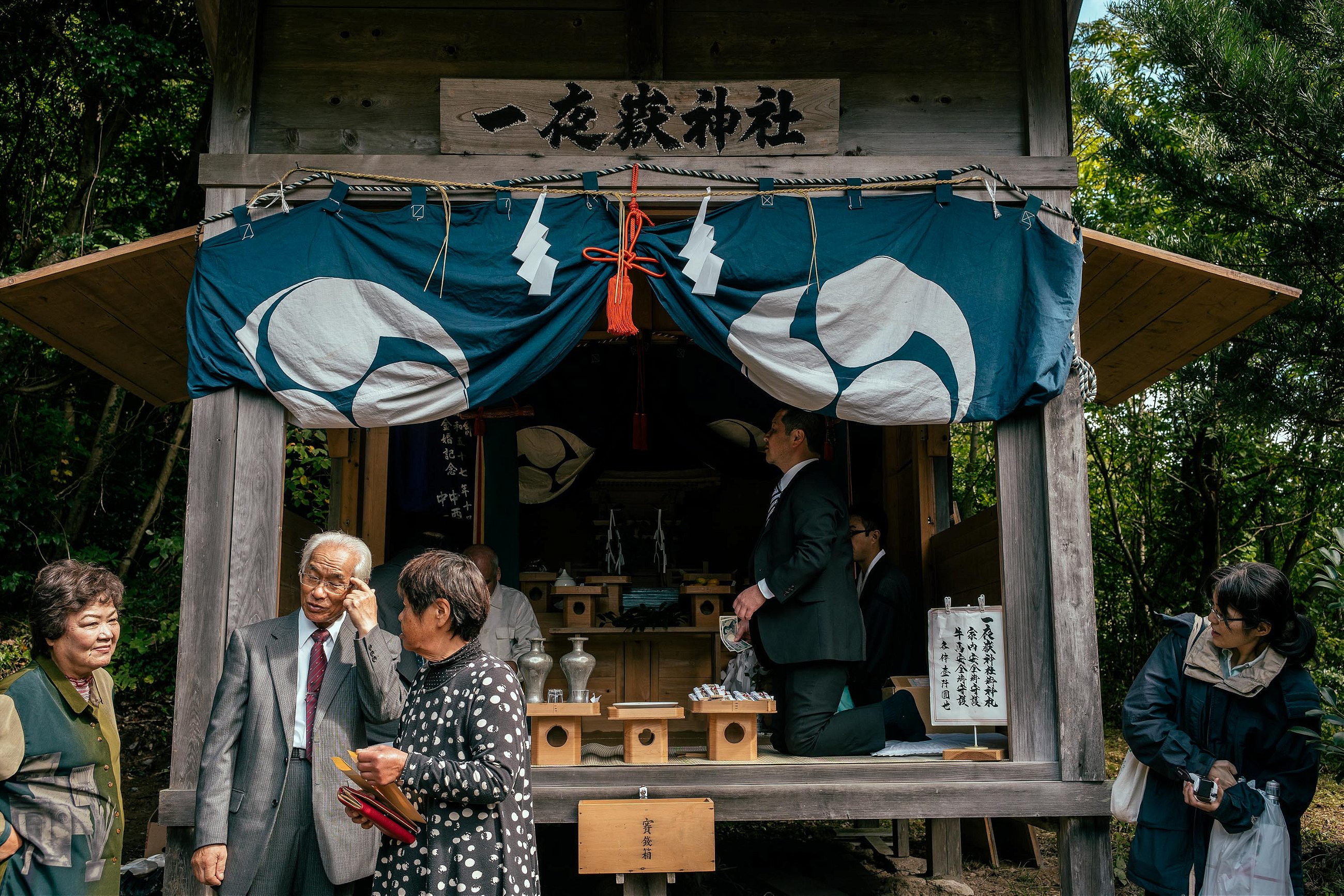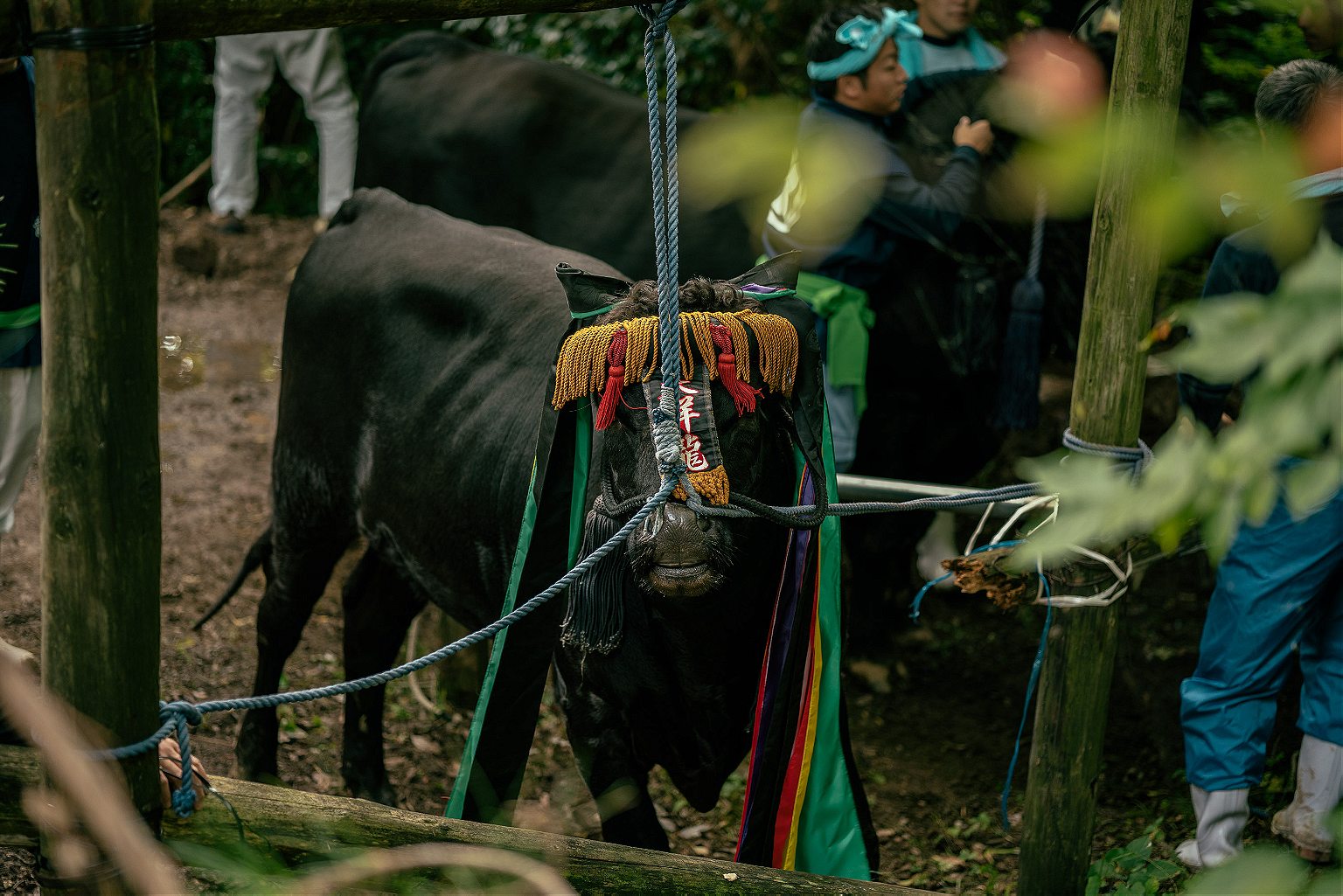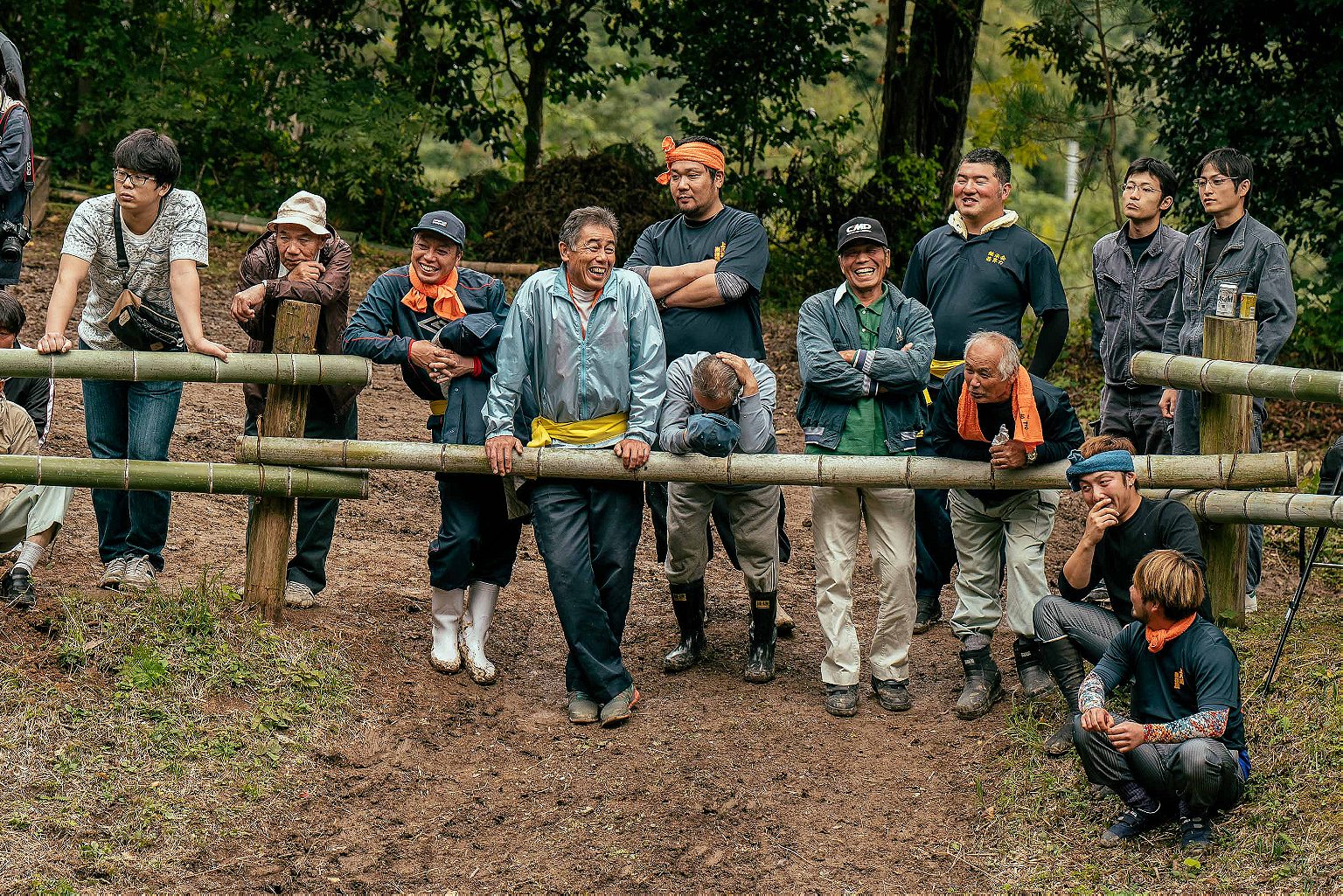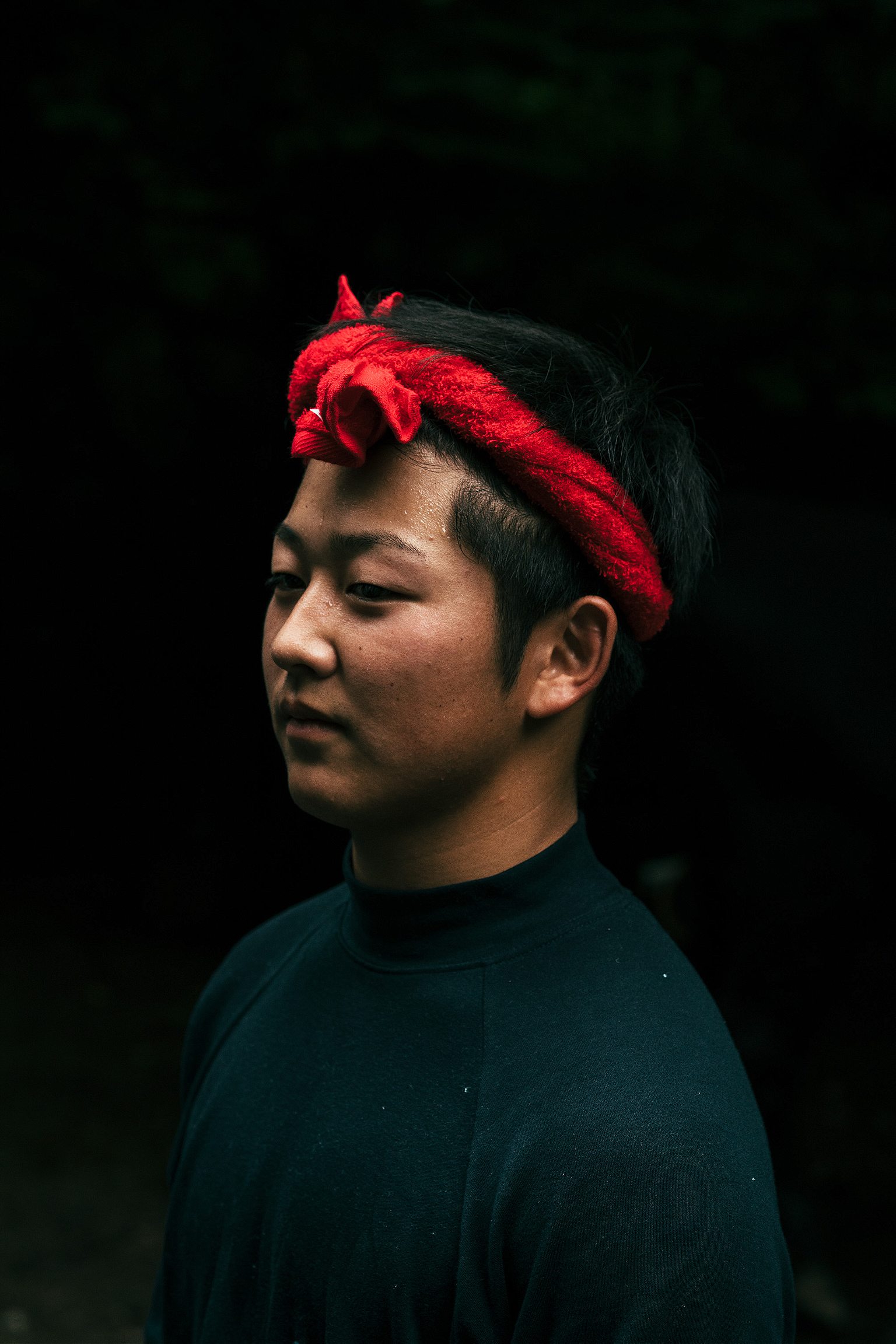An ancient form of bullfighting perseveres in western Japan.
It’s 10 a.m. and the sake glasses are full. Hiroho Kadowaki—the head of the family—is at one end of the low dining table, trying to reel in a grandson crawling across the tatami in pursuit of a toy car. He keeps the toast brief. “Let’s have fun. Let’s be safe.” With a kampai, or cheers, Kadowaki-san and the dozen other men sitting around the table—brothers, uncles, sons—raise glasses. Dogo Island’s autumn bull sumo tournament is about to get underway.
Bull fighting, as it was then, was introduced to Dogo and the other wind-battered Oki islands off Shimane Prefecture in western Japan by the Emperor Gotoba after he was exiled here in the 1220s. A video at the local history museum on Dogo, the largest of the four inhabited Oki islands, paints a gruesome picture of days gone by. Bulls would have their horns sharpened for fights, which could go on for hours until one collapsed. No chance for a rematch either: the losing bulls were butchered ringside.



Today, things are different. Like sumo, ushi tsuki is touched by Shinto ceremony, with salt being tossed around the ring for purification before each bout. It apes sumo in many other ways, too: the pre-tournament parade of bulls and banners around the ring, the way the bulls face each other down ahead of the initial clash of foreheads, the envelopes of cash changing hands during the day.
Each bout lasts several to half a dozen minutes, as the bulls push head against head, sometimes twisting and circling with their horns entwined, until one tires and turns away.
It all plays out a few miles from Kadowaki’s farm, in a muddy circle surrounded by grassy banks just big enough for the couple of hundred spectators who have turned up. Each farm has set up camp at the edge of the woods behind, with stoves for cooking hotpots, coolers for beer, and the bulls tethered to trees.




As the only obvious outsider in the crowd, there are frequent offers of food from different groups picnicking around the ring. The day is punctuated by a barrage of sake refills and toasts and a succession of brief conversations that frequently repeat themselves: how did you end up coming to watch this? Where are you from? Do you like sake? But, occasionally, there are insights into the event, and Oki.
“I remember doing this with my grandfather, though back then they’d keep the bulls hungry the week before to make them more aggressive,” one older farmer tells me. Another explains how the bulls’ body temperature rises as they get excited before a bout, until they are almost hot to the touch. That’s not the only physiological change. “When they start, keep an eye on their balls,” he adds. “The bag gets lower when they are tiring.” Sage advice for negotiating a mid-bout wager, although judging by that criteria every bull here looks a bit sleepy to me.



Daishoryu, the bigger of the Kadowaki’s two bulls in the event, doesn’t tire when his time comes. The farmers said he wouldn’t. Despite weighing roughly 1600 pounds, he isn’t the biggest of the 16 bulls on show, but what he lacks in bulk, he makes up for in fleetness of foot. His opponent has no solutions, and as soon as he starts to turn away from the duel, a dozen farmers descend into the ring to separate the two bulls.
As Daishoryu is led away victorious, hollers and claps echo into the woods. One of the grandsons, no older than three, is set on the bull’s back, and the troupe slip and squelch back to their camp. A new round of toasts begins. Traditions are passed on.